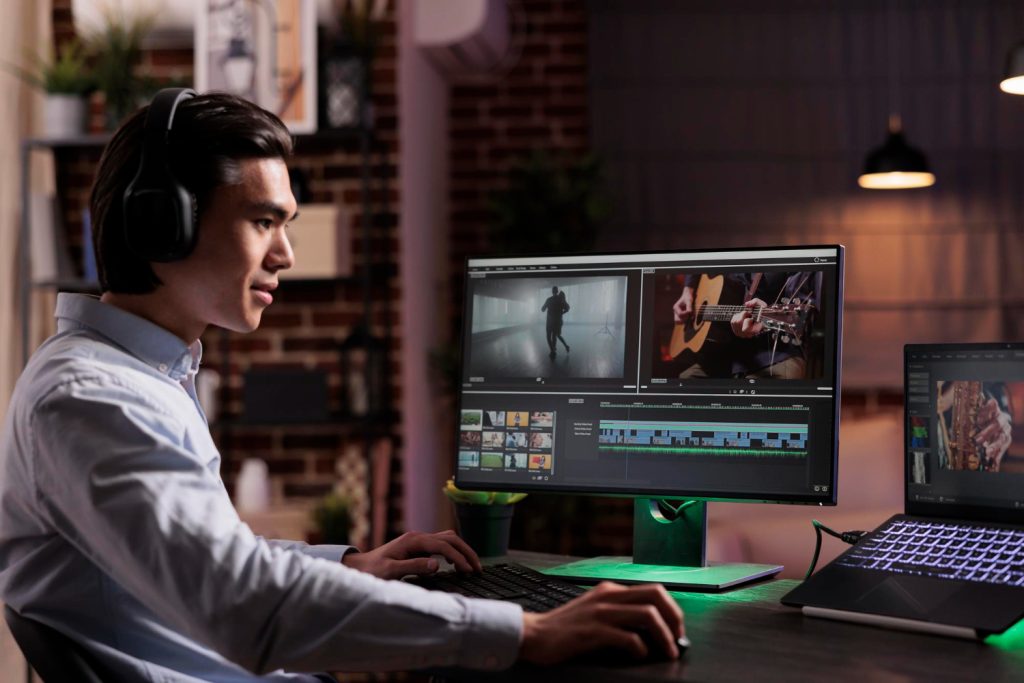Choosing the right CPU for video editing is a crucial decision, especially for those diving into the world of content creation. When it comes to enhancing your editing experience, the right Central Processing Unit (CPU) plays a vital role. If you’re considering upgrading or building a new system, selecting the perfect CPU can make a substantial difference.
At Mindtech, your go-to destination for quality tech gear, finding the ideal CPU for your video editing needs is a breeze. Let’s delve into some straightforward tips to guide you through this essential decision.
Know Your Budget:
The first step in finding the right CPU is setting a budget. CPUs come in various flavors, and knowing how much you’re willing to spend can narrow down your options. There are budget-friendly options that deliver good performance for casual video editing, and there are high-end choices for professionals seeking top-tier speed and efficiency.
Consider Core Count:
Cores are like the worker bees inside your CPU hive. More cores mean more tasks can be handled simultaneously. For video editing, a CPU with at least four cores is a good starting point. If you’re serious about editing high-resolution videos or working on complex projects, consider CPUs with six or more cores for that extra oomph.
Clock Speed Matters:
Imagine clock speed as the heartbeat of your CPU. It’s measured in gigahertz (GHz), and higher numbers generally mean faster performance. For video editing, a CPU with a clock speed of around 3.5 GHz or higher is recommended. However, it’s essential to strike a balance between core count and clock speed for optimal performance.
Compatibility Check:
Before falling head over heels for a CPU, make sure it’s compatible with your video editing software. Some applications work better with certain CPU architectures, so do a quick compatibility check to ensure a seamless editing experience. Compatibility ensures that your chosen CPU and editing software dance together without any awkward missteps.
Integrated Graphics vs. Dedicated GPU:
Some CPUs come with integrated graphics, which means they have a basic graphics processor built-in. For light video editing tasks, integrated graphics may be sufficient. However, for heavy-duty editing and rendering, a dedicated Graphics Processing Unit (GPU) can significantly boost performance. Consider pairing your CPU with a capable GPU for a tag team of editing prowess.
Cache Size:
Think of the cache as your CPU’s short-term memory. A larger cache allows the CPU to access frequently used data quickly. When selecting a CPU for video editing, go for one with a decent-sized cache – at least 6MB or higher. This ensures that your CPU doesn’t waste time searching for information, keeping your editing process smooth and snappy.
Brand Trust:
Stick to well-known CPU brands like Intel and AMD. These giants have a track record of producing reliable processors. Intel CPUs are known for their single-threaded performance, while AMD CPUs often offer more cores for the price. Research and read user reviews to gauge real-world performance and reliability before making a decision.
Future-Proofing:
Technology evolves faster than a blockbuster plot twist. To future-proof your video editing setup, consider investing in a CPU that can handle upcoming software updates and increasing editing demands. Opt for a CPU that strikes a balance between current needs and future expectations, ensuring your system stays relevant for years to come.
Cooling Considerations:
Video editing can make your CPU work up a sweat, literally. Ensure your chosen CPU is compatible with efficient cooling solutions. Some CPUs come with stock coolers, while others may require an aftermarket cooler for optimal performance. Keeping your CPU cool ensures longevity and prevents performance throttling during intense editing sessions.
Power Consumption:
Nobody likes a power hog. Check the power consumption of your chosen CPU, especially if you’re building a system with energy efficiency in mind. A lower TDP (Thermal Design Power) value means less heat generated and lower power consumption, contributing to a more eco-friendly and pocket-friendly setup.
In conclusion, choosing the right CPU for video editing is like casting the lead role in your cinematic masterpiece. Consider your budget, the number of cores, clock speed, compatibility, graphics options, cache size, brand reputation, future-proofing, cooling solutions, and power consumption.
By understanding these simple factors, you’ll be well on your way to assembling a video editing rig that brings your creative visions to life without any technical hiccups.

